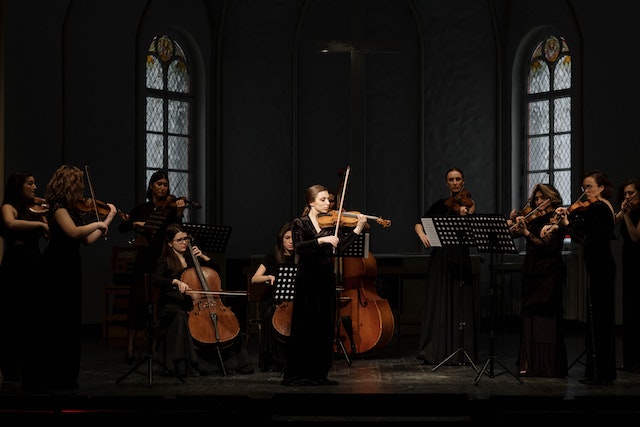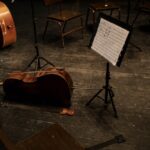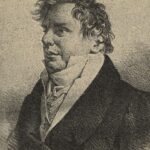In this article we discover who was Galitzin, what is the story of the Quartets named after him and whether he was a good payer or not.
Who was Nikolai Borisovich Galitzin?
Nikolai Borisovich Galitzin (8 November 1794, Saint Petersburg, Tsardom of Russia – 22 October 1866, Kursk Governorate, Russian Empire) was a Russian an aristocrat from the Galitzin-family.
Just as his father, who was an army officer, Nikolai was destined to serve in the army. He graduated in 1810 from the Page Corps (a military academy in Imperial Russia) and became the officer of the Kiev Dragoon Regiment. He had an unfortunately busy life at the military, he participated in some 50 battles, including the famous Borodino Battle and was present at the capture of Paris.
For us, more importantly, he was a music lover and a musician. He played cello, his wife Princess Saltykow, played piano at the highest level. They both significantly shaped the musical taste in St. Petersburg. Galitzin was a passionate admirer of Beethoven and his music.
The prince lived in Vienna for while and probably approached Beethoven. Whether the two had met personally or not, has not been established.
Beyond the three string quartets that bear his name, it was by Galitzin, how the Missa Solemnis reached St. Petersburg and was performed in April 1824. Its first performance anywhere.
The story of Beethoven’s Galitzin String Quartets
In November 1822 a letter arrived from St. Petersburg. The sender, a certain Prince Nikolai Galitzin, had the following to say,
“As much a passionate an amateur in music as an admirer of your talent, I am taking the liberty of writing to you to ask you if you would be willing to compose one, two or three new quartets. I shall be delighted to pay you for the trouble whatever amount you would deem adequate.”
The timing was perfect for Beethoven, as by this time, after some path searching and a longer dry period in his creativity, he was ever more gravitating towards string quartets and now a prince was here, who was willing to pay for the works! He accepted the offer for 50 ducats each (around 250 florins). These were his first string quartets since 1810.
It took Beethoven three years to finish the three Quartets. During this period Galitzin was noble and patient towards the composer. He offered his help and even gave Beethoven a carte blanche at his banker, to draw money in advance – if necessary.
The busy composer sent him the first Quartet in January 1825 and the next two around February 1826.
Controversies around the payment for the Quartets
Galitzin made the first payment for the first quartet via the house of Henikstein in 1823. In the meantime, though, the prince had the idea to promote the Missa Solemnis in St. Petersburg and asked Beethoven to use the first 50 ducats as the payment for the Mass, instead. During the period of waiting, he even commissioned scores for more new works, like the Ninth Symphony and planned to organize a concert in St. Petersburg for the Big Nine. Safe to say, Galitzin was enthusiastic!
The Prince made another payment in December 1824 (months before the arrival of the first Quartet), another 50 ducats. One should assume, as the replacement for the first 50 ducats, that were used for the Mass. In February 1826 by the request of the composer, a special courier carried the finished scores to St. Petersburg.
Time was passing and the money did not arrive, Beethoven grew anxious. In a letter 14 January 1826 the Prince wrote, “I will send to Mr. Stieglitz <his banker> the value of 75 ducats to be delivered to you by Mr. Fries; 50 for the quartet and 25 for the overture which is magnificent and which I thank you very much for dedicating to me.” (25 for a new dedication of an overture)
In the middle of May, still no sign of the money, an emissary by the name of Lipscher repeatedly approached the Prince in St. Petersburg, but without success. Finally he bribed himself into the presence of Galitzin, who promised to pay soon. Lipscher, now July and still no payment, tried his luck again. After many attempts, the Prince made promises – again. In November, he wrote directly to Beethoven, admitting the 125 ducats debt. He pointed to the great losses and misfortunes, as the background for his delay.
Beethoven dictated two inquiring letters on his deathbed, both to Stieglitz and Co. (Galitzin’s bankers). The second, just five days before his death. The money never arrived.
The debt remained open for more than two decades. On March 20, 1829, Hotschevar, guardian of Karl van Beethoven (nephew and heir to Beethoven) appealed to the Imperial Chancellery to act in the matter. Galitzin paid 50, but not the remaining 75 ducats. Finally, in 1852, by the pressure form Schindler, the rest of the debt was paid.
What comprises the Galitzin String Quartets?
1. String Quartet No. 12 in E-flat major, Op. 127. It has four movements and a typical performance is approx. 36-38 minutes long. It was premiered on March 6, 1825.
2. String Quartet No. 13 in B-flat major, Op. 130. It has six movements and the original form included, as the last movement, the Grosse Fuge. In its original version the typical performance is approx. 45-50 minutes. Later, Beethoven was convinced by friends and his publisher to write a new closing movement and publish the Grosse Fuge as a separate piece. In its original form, the premiere was in March 1826. The composer called this Quartet his favorite.
3. String Quartet No. 15 in A minor, Op. 132. It has five movements and a typical performance is 45 minutes long. The premiere was on the 6 November 1825.





